① What is Seppuku? Sounds Insane, Right?
You might have heard that samurai in Japan used to kill themselves by cutting open their own stomachs.
Yeah… that actually happened. It wasn’t a myth or some exaggerated legend. It was a real, ritualized act called Seppuku, practiced by samurai to protect their honor—even in death.
It’s painful just to imagine, but to the samurai, it was the ultimate act of courage, responsibility, and dignity.
In this article, we’ll explore this bizarre but fascinating part of Japanese history that will make you say, “WTF JAPAN!?”
② What Exactly Is Seppuku?
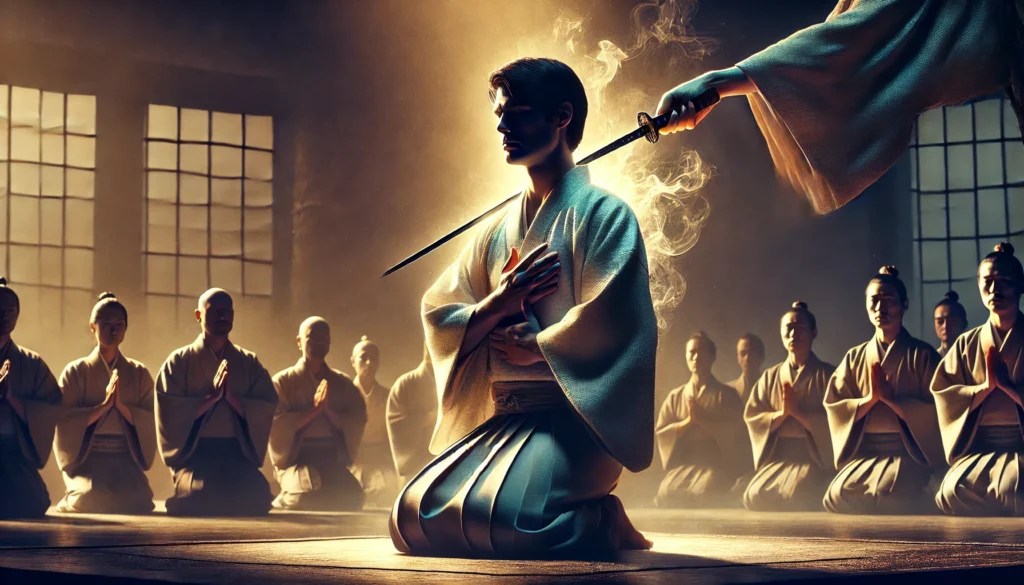
Seppuku (often known in the West as “Harakiri”) is a traditional Japanese ritual suicide, where a samurai cuts open his own stomach with a blade.
But it wasn’t just a way to die.It was a way to take responsibility, to express remorse, and to die with honor. If a samurai failed in battle, committed a crime, or brought shame to his lord, he could choose seppuku over a dishonorable life (or execution).
③ Why the Stomach? What’s the Meaning Behind It?
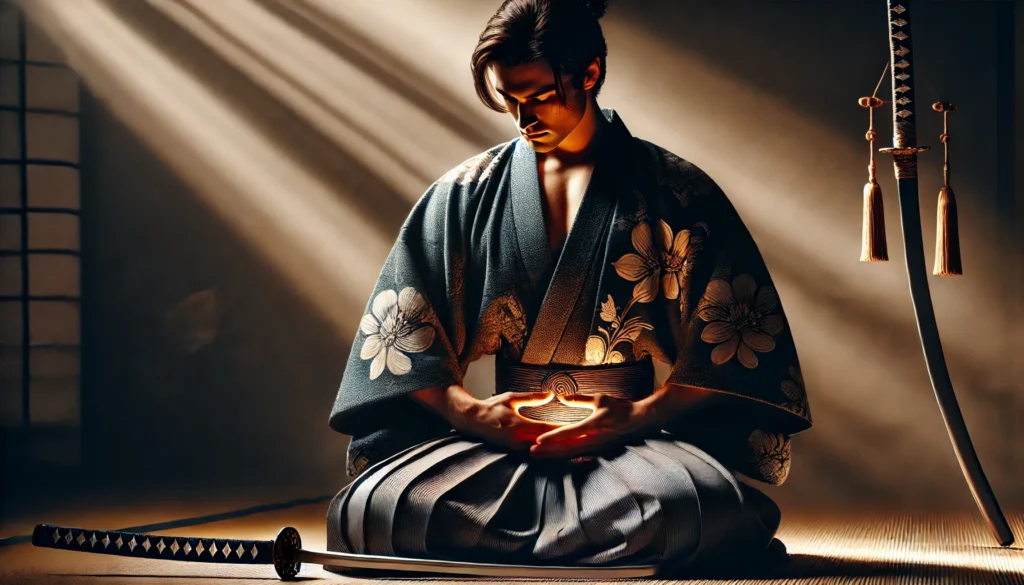
You might wonder: why the stomach and not the heart or throat?
In old Japanese belief, the belly was the seat of the soul and emotions. So, to cut it open meant revealing one’s true self—honestly and without fear.
Seppuku was not just about dying—it was about showing your sincerity, your regret, and your inner strength through the most painful and direct way possible.
It was, in a way, a performance of the samurai spirit itself.
④ The Ritual of Seppuku and the Role of the “Kaishaku”
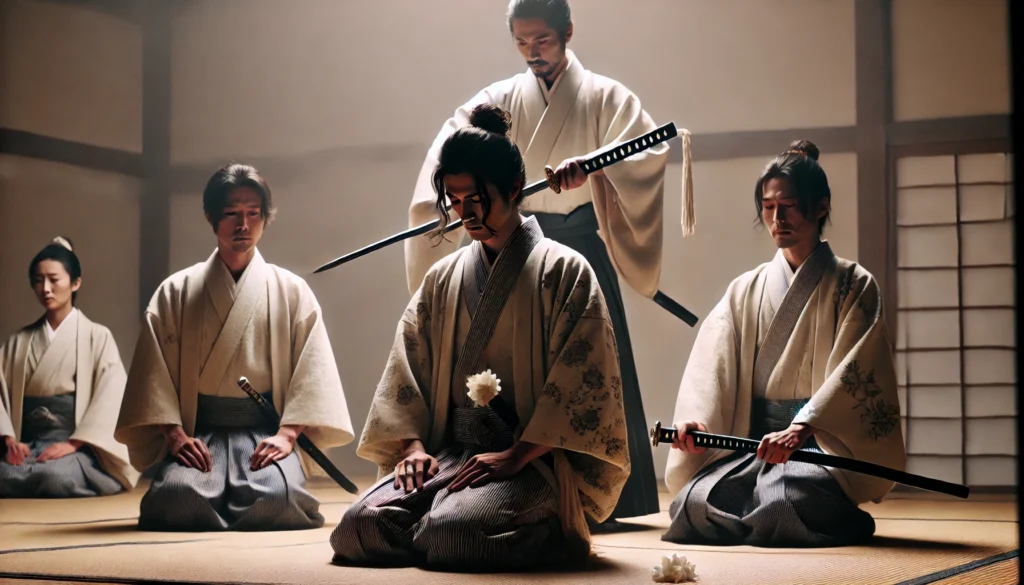
Seppuku followed a strict ceremonial process:
1. Wear a white kimono (a symbol of death)
2. Write a final poem or farewell message
3. Kneel in front of witnesses
4. Cut open the stomach with a short sword
5. A second person, called the kaishaku, would behead the samurai to end the pain quickly
This “kaishaku” wasn’t an executioner—it was often a friend or fellow samurai. The role required precision and honor: if you messed up the beheading, you brought shame upon yourself.
So yeah, even helping someone die had to be done perfectly. That’s samurai culture for you.
⑤ Famous Seppuku Stories That Shocked History
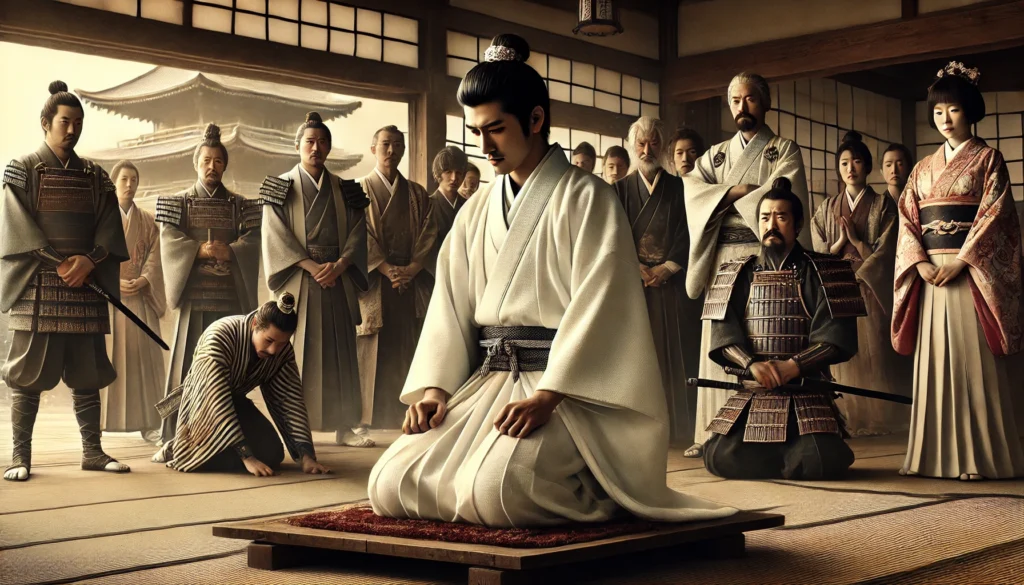
1. Asano Naganori (The 47 Ronin Incident)
In 1701, a samurai lord named Asano attacked a high-ranking official inside Edo Castle. As punishment, Asano was ordered to commit seppuku the same day—while the official, Kira, went unpunished.
This led to Asano’s 47 loyal samurai secretly planning and carrying out revenge. They also committed seppuku afterward.
This is one of the most famous loyalty stories in Japan and is still honored today.
2. Yamanaka Shikanosuke – The Man Who Asked for Suffering
A legendary samurai who prayed to the moon, saying,
“Grant me seven hardships and eight sufferings.”
Why? Because he believed that only through pain could he truly serve his lord.]
In the end, he was captured by enemies and ordered to commit seppuku—which he calmly accepted as part of his wish.
Foreigners often compare him to a stoic philosopher or a warrior monk.
3. Yukio Mishima – The Last Samurai?
In 1970, the famous author and nationalist Yukio Mishima staged a dramatic protest inside a military base.
After making a speech demanding the return of traditional Japanese values, he actually committed real seppuku—in modern Japan.
His assistant failed to behead him properly, so Mishima cut himself twice before dying.
The incident shocked the world and made headlines everywhere. Many saw it as the ultimate act of conviction.
⑥ Foreign Reactions: Crazy? Or Kind of… Noble?
To many people outside Japan, seppuku sounds insane.
Why would anyone choose such a painful, bloody way to die?
But once you understand the mindset—honor over life, responsibility above all—it starts to make a strange kind of sense.
Westerners often say:

“I don’t understand it… but I respect it.”
And you’ll find references to it all over Japanese media—movies like The Last Samurai, anime like Rurouni Kenshin, and countless historical dramas.
⑦ Conclusion: Seppuku Is the Japanese Way of Death (and Honor)
Seppuku isn’t just about death.
It’s about how you die—with dignity, with meaning, and with no regrets.
To the samurai, a good death was the final proof of a good life.
It’s terrifying. It’s beautiful. It’s deeply, uniquely Japanese.
Recommended Articles




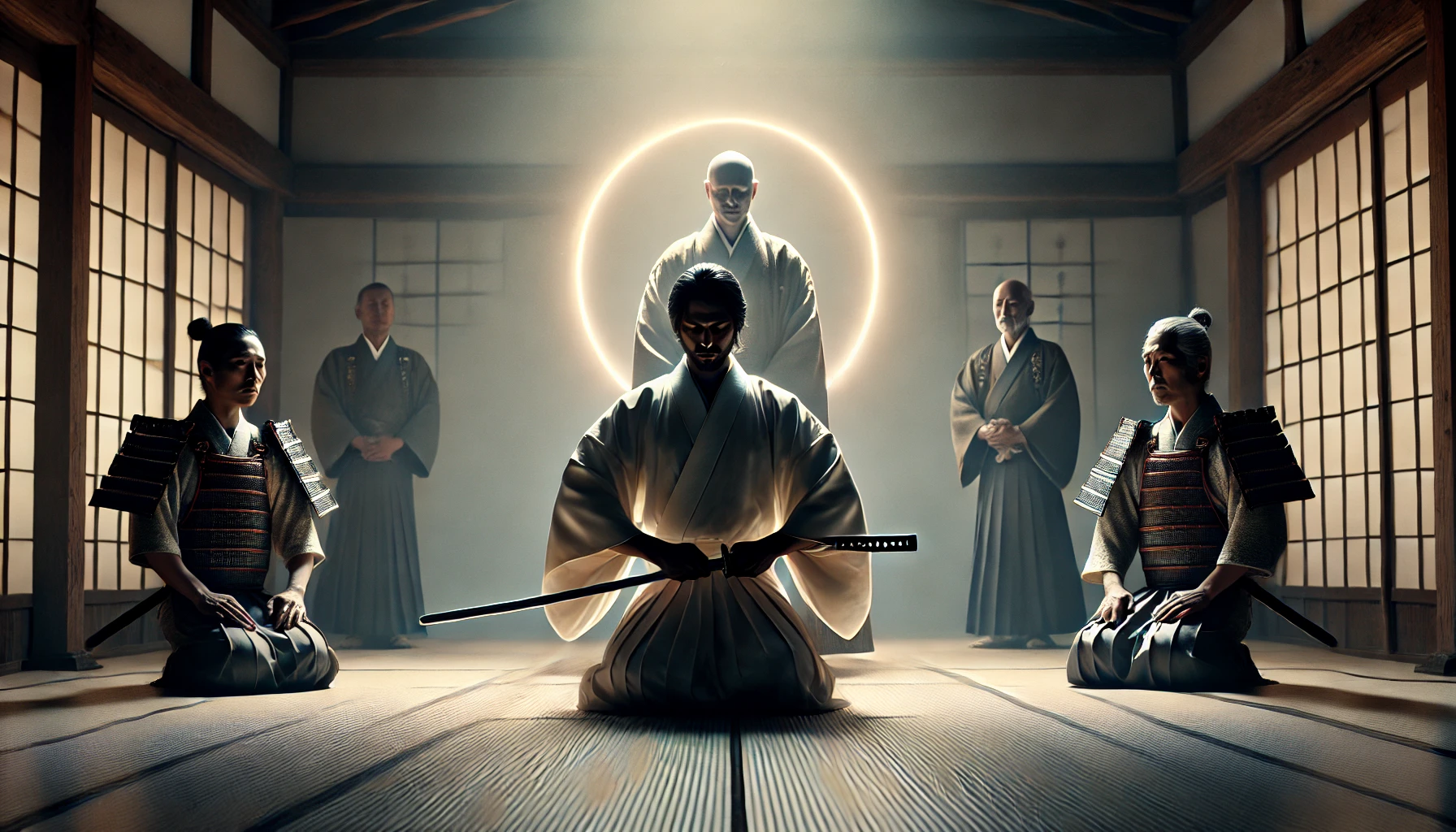


Comments